By its title, My First Book of Japanese could easily be mistaken for a children’s book on colors, shapes, and numbers. Actually, it could be used as an introductory vehicle for young children to Japanese. It could also be great for elementary, middle, or high school students to learn basic words. I spent a couple of years living in Japan and My First Book of Japanese is a great refresher for my vocabulary.
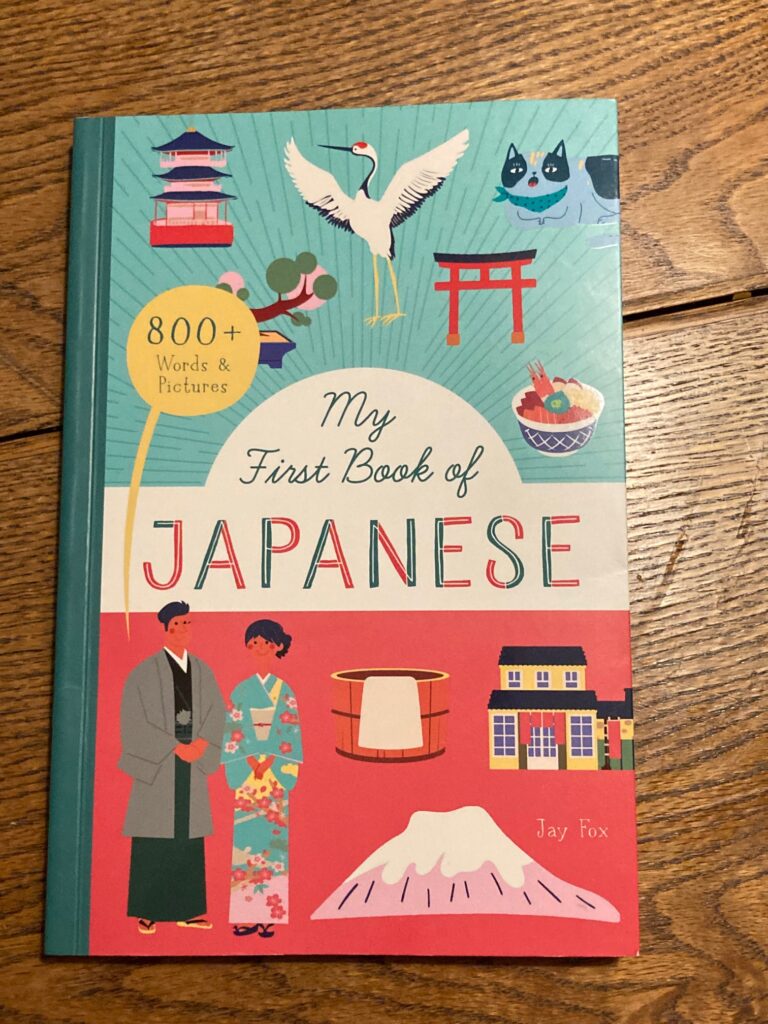
My First Book of Japanese starts out with the first 20 pages as a big-picture, grammatical overview of what can be a very confusing language. In Dave Berry’s Guide to Japan he alluded to the fact that if you’re in Germany you’ll still be able to phonetically pronounce where you are. Granted, your pronunciation might not be 100% correct, but the point will be made. In Japan, because of the kanji, hiragana and katakana, you’ll be looking at phonetic symbols that might as well be hieroglyphics to non-Japanese folks.
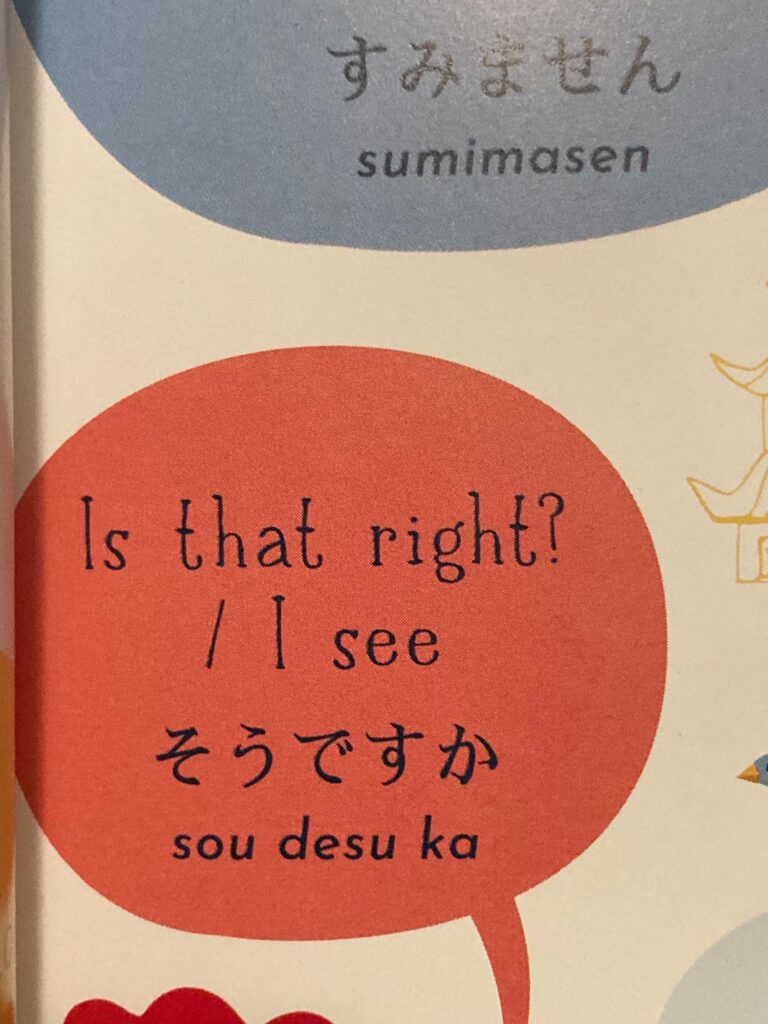
It’s in these pages where their pronunciation, different usage, examples and a sample sheet of kanji that first-grade students learn. Essentially katakana is for words that sound like their western equivalent words, like karenda (calendar), hiragana is the 46 letter of the Japanese alphabet, and kanji are the Japanese version of Chinese characters. Once you combine aspects of each of them, or in some cases just one of them, and you’ll be able to read signs when you visit Japan.
That sounds intimidating, however, having lived there, I can attest to the fact that tourist sites or important places usually have their English names or phonetic pronunciation under them. Assuming that you’re reading My First Book of Japanese for a visit or casual enjoyment, then you’ll be doing so for the ability to speak basic phrases or words. And to that end, the book does a stellar job of introducing the basic vocabulary that one would need in order to get around Japan or make pleasant, basic conversation with people.
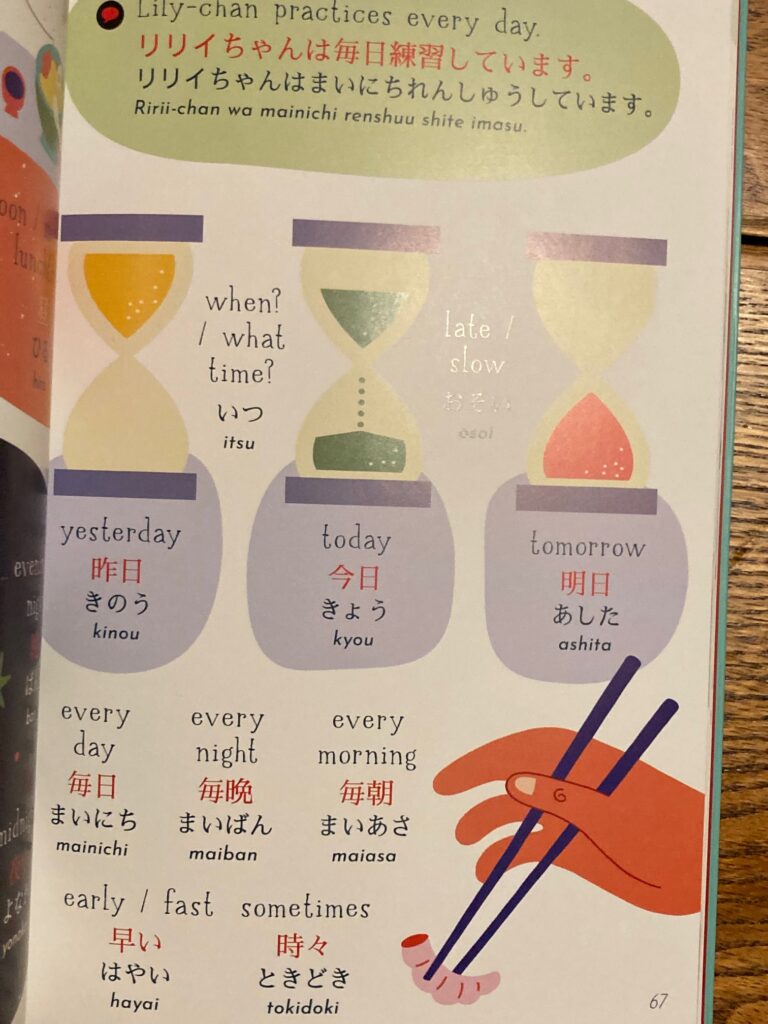
My First Book of Japanese is loaded with bright colors and each page is broken up into basic topics, like home, bedroom, people, vegetables, health, the weather, and so on. On those pages, each vocabulary word is presented in kanji, kana, and the way it’s phonetically pronounced in English. Uwagi is coat, onna no hito is woman, hebi is snake, eigakan is movie theater are just a couple of the vocabulary that’s presented in its pronunciation and English word. You’re also able to look things up by their English word and then go to the page where you’ll see its Japanese partner.
This is a book that can be read, like a traditional book where you’re reading the words and trying to memorize them. At over 800 Japanese words it really provides a nice overview into the blocks that will allow you to rough out spoken phrases or main ideas. If you really intend on going to Japan then I recommend using flash cards to drill in the vocabulary. That’s the way I learned most of my Japanese vocabulary and the way that I encourage my students to study any subject now.
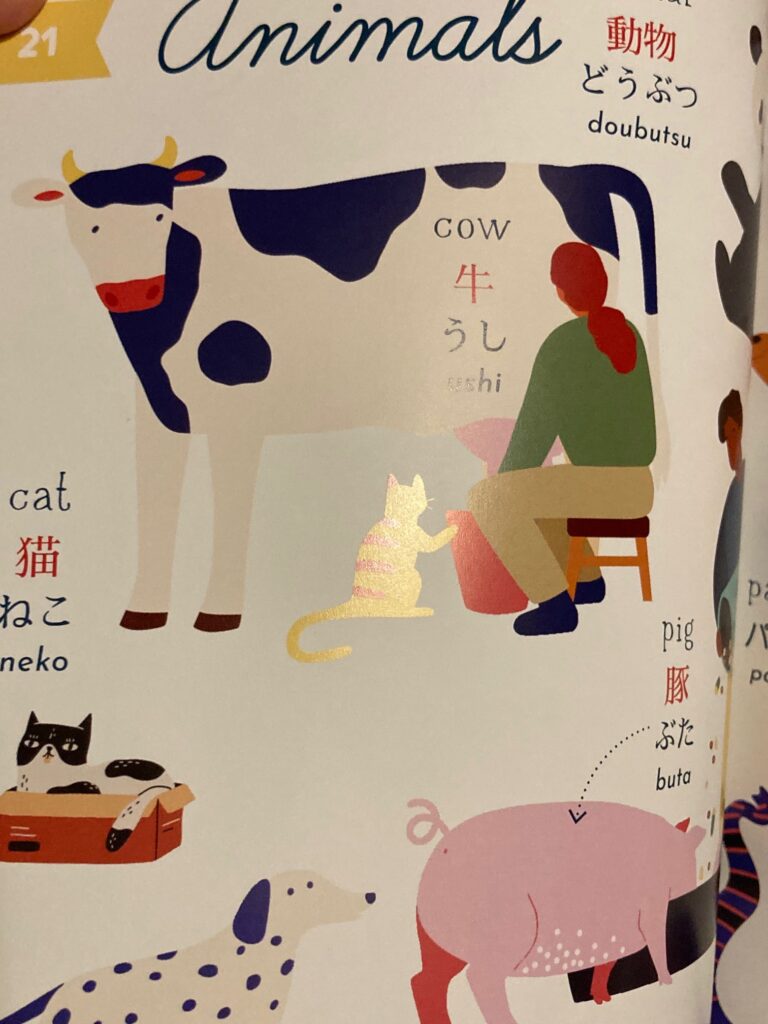
Our 11-year-old is not exactly warming up to that manner of studying. We’ve suggested writing down questions such as, “what’s the difference between a physical and chemical change” on one side of a card. He’d then write the answer on the other side which would genuinely quiz him on the things that he needs to learn. That way he could look at the answer and be able to think of the question or vice versa. You burgeoning polyglots who live in a country where one language is dominant know the struggle that I’m talking about.
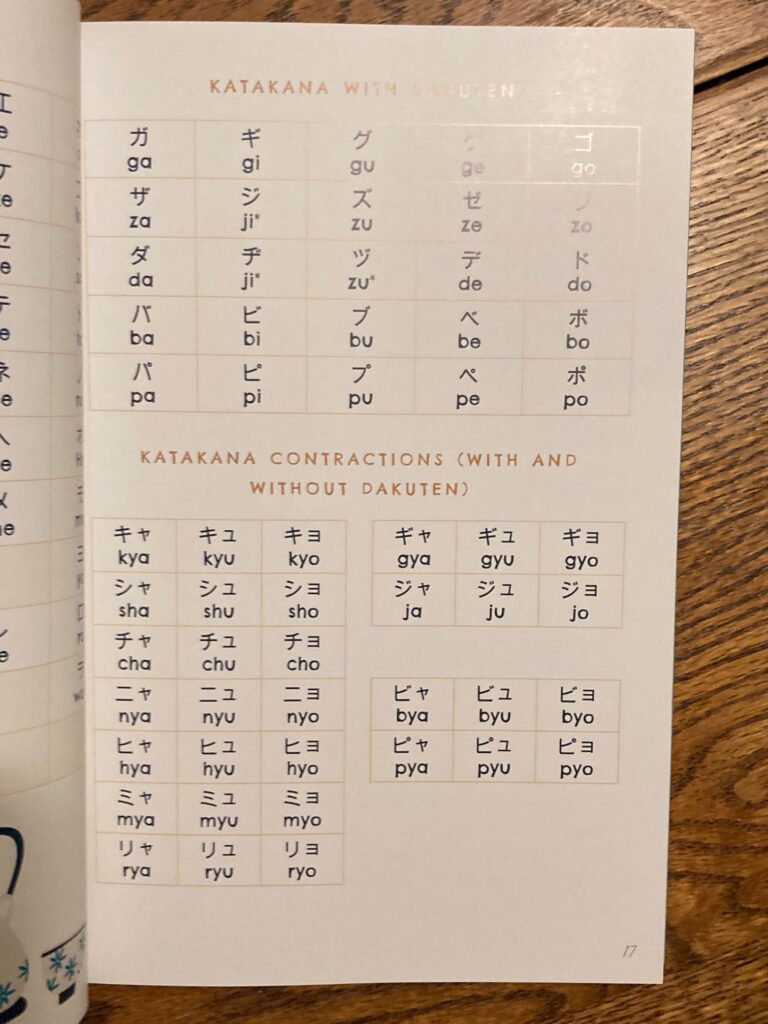
The book’s shape lends itself to being a very casual method of learning vocabulary also. It resembles a travel guide and has modern clip-art style illustrations, with just a touch of kawaii* to bring those Japanese learners into the book.
My First Book of Japanese is by Jay Fox and is available on Bushel & Peck Books.
*Kawaii is a Japanese adjective, but it’s also a condition or state of being. It means cute, but as the word has been accepted into the anime and manga community it’s also come to mean being especially Japanese.
**Nihongo=the language of Japanese
There are affiliate links in this post.

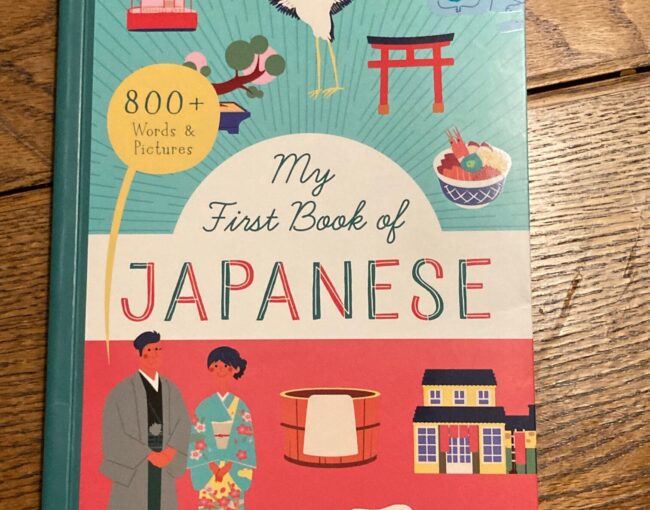



 Facebook
Facebook Twitter
Twitter Flickr
Flickr GooglePlus
GooglePlus Youtube
Youtube